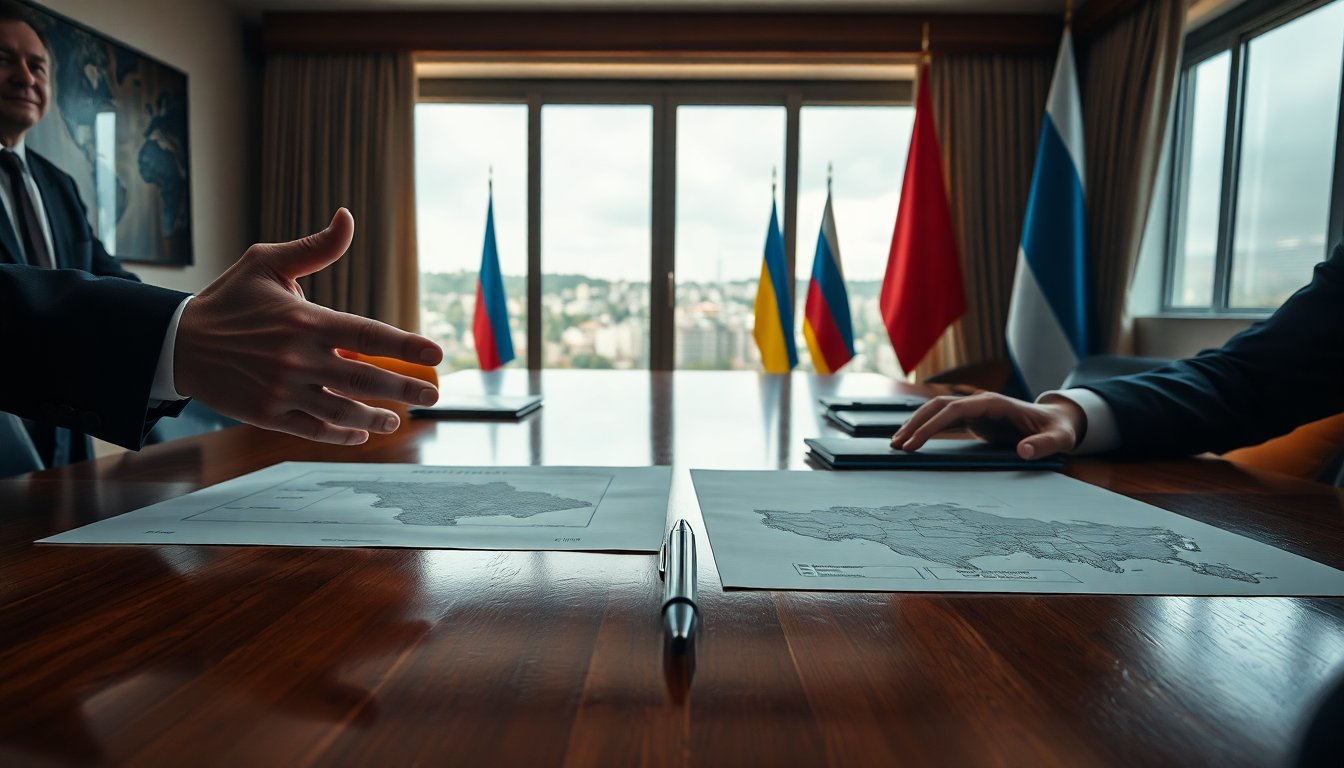Table of Contents
In the evolving landscape of international diplomacy, the Trump administration has unveiled a new strategy aimed at resolving the ongoing conflict between Russia and Ukraine. This proposal has sparked significant debate, drawing both support and criticism from various parties involved. According to reports from established news outlets like Axios and Reuters, this initiative contains several critical stipulations that could drastically alter the course of the conflict.
The core of the new peace plan includes a demand for Ukraine to concede control of the Donetsk region and accept Russian sovereignty over Crimea. Furthermore, it proposes that the current front lines in the Zaporizhzhia and Kherson regions be effectively frozen, leading to a potential stalemate that could benefit Russia significantly.
Key elements of the peace plan
The proposal, detailed in a document consisting of 28 specific points, outlines a series of concessions that Ukraine would need to make. Among these, Ukraine would withdraw its military presence from the Donetsk area, effectively granting control of the Donbas region to Russia. In a bid to establish peace, both parties would agree to create a demilitarized zone in the Donetsk and Luhansk regions, which would prohibit the deployment of any military forces.
Additionally, the agreement stipulates that territories currently claimed by Russia but not fully under its control could be subject to future negotiations. However, the exact areas that would be returned to Ukraine remain uncertain. The plan also calls for formal recognition of the Donbas and Crimea as Russian territories by the United States and possibly other nations, although it does not require Ukraine to acknowledge this.
Military and cultural concessions
One of the more contentious aspects of the proposal is the requirement for Ukraine to reduce its military forces significantly. Estimates indicate that Ukraine may have to cut its military size by as much as half, according to some sources. Furthermore, restrictions on the use of long-range weaponry capable of striking deep into Russian territory are also part of the conditions.
Another critical point is that Ukraine would need to officially recognize Russian as a state language and provide the Russian Orthodox Church with a formal status. This aspect has raised eyebrows, as it reflects a shift in the sociopolitical landscape of Ukraine. Moreover, the prohibition of foreign troops on Ukrainian soil is intended to prevent further international entanglements.
International responses and implications
The reaction to this proposal has been mixed, with many analysts labeling it as a significant concession to Russian demands. Critics argue that it aligns closely with previous Russian demands articulated in earlier negotiations, particularly a memorandum from June 2025, highlighting a lack of substantial progress toward genuine peace.
Ukraine’s government has reportedly not endorsed this peace plan, with sources indicating that disagreements led to the cancellation of a meeting between Ukrainian President Volodymyr Zelensky, U.S. officials, and Turkish representatives. It appears that Zelensky was advocating for a broader discussion involving European partners, reflecting a desire for a more inclusive approach to negotiations.
Concerns over U.S. influence and future negotiations
Amid these developments, skepticism persists among European officials regarding the intentions behind Washington’s push for acceptance of the plan. Many believe that Russia is leveraging the situation to buy time and evade further economic sanctions while appearing open to dialogue.
As the international community continues to scrutinize the implications of this proposal, the Kremlin has expressed readiness to resume negotiations, blaming the pause on Ukraine’s reluctance. In this context, Zelensky has acknowledged the crucial role of the U.S. in facilitating a resolution to the conflict, highlighting the need for coordinated efforts with Ukraine’s allies.


